- Newsletter
Oblique plane
Anatomical Body Planes and Sections – Anatomy and Physiology – Oblique plane
The anatomical body planes and sections help us learn the many ways in which the body can be viewed when divided into sections in anatomy and physiology. They’re extremely important to understand if you want to work in a healthcare sector where you’ll be examining images from MRI scanners and other imaging devices.
Visualize an imaginary flat surface, similar to a glass rectangle, that splits the body into two parts while thinking about a body plane.
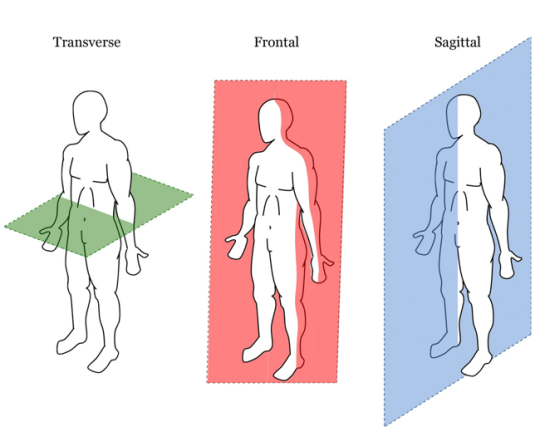
Four Types of Body Planes
The acronym “SOFT,” which stands for Sagittal, Oblique, Frontal, and Transverse, is an easy method to memorize the four primary types of body planes.
Two of these planes (sagittal and frontal) are vertical and run from top to bottom. The horizontal plane (transverse) is one of the planes, and the oblique planes are all the “odd” angles between the horizontal and vertical planes.
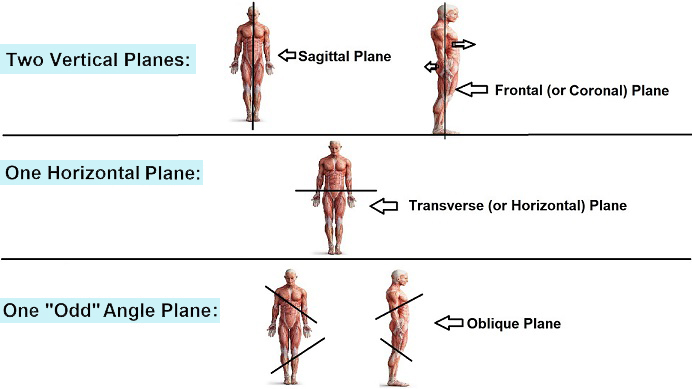
Sagittal Planes (Midsagittal and Parasagittal)
The sagittal plane splits the body into left and right halves, running vertically from top to bottom (and front to back). This is simple to remember because your skull is divided into left and right sides by a sagittal suture. And that’s exactly what this plane does: when viewed from the anatomical position, it splits the body into right and left sides. Sagittal planes can be made even more specific by adding a prefix to aid in identifying the type of sagittal plane.
A sagittal plane that properly splits the body at the midline is known as a “Midsagittal” or “median” plane. The prefix “mid” can serve as a reminder that it is in the middle. Any sagittal plane that does not completely follow the body’s midline is referred to as “parasagittal.”
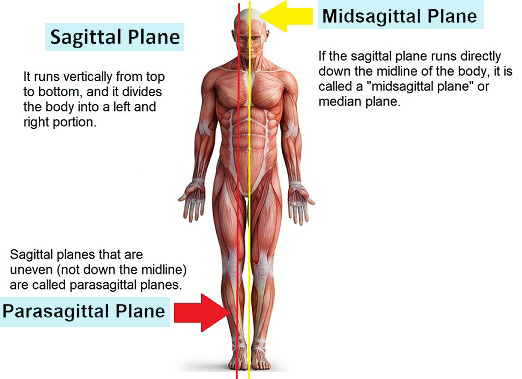
Oblique Planes
An oblique plane is a plane that can be any angle other than horizontal or vertical. In actuality, the word “oblique” denotes “not parallel” or “at a right angle.” The phrase “obliques are odd angles” is a good way to remember this. You could also consider your oblique muscles. These muscles are placed laterally to your abdominal muscles and come down at an angle.
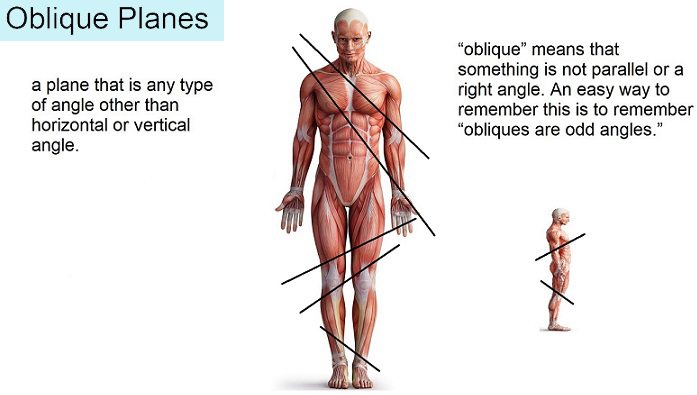
Transverse Planes (Horizontal or Axial Planes)
The only plane that travels horizontally, splitting the body or structure into a top (superior) and bottom (inferior) half, is the transverse plane (also known as a horizontal plane). Allow the name to assist you in remembering it: the prefix trans means “across.” Consider transatlantic flights, which will transport you over the Atlantic Ocean. Remember the direction of the horizontal (transverse) plane by thinking of the horizon, which is the horizontal boundary between the earth and the sky.
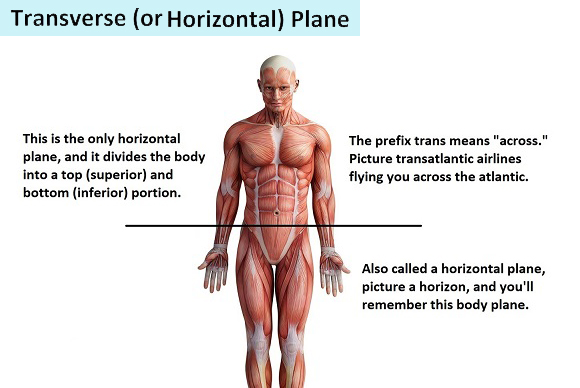
Frontal (Coronal) Planes
The frontal plane (also known as the coronal plane) separates the body into a front (anterior) and back (posterior) section by running vertically from top to bottom (and left to right). Allow the name to assist you once more. You’ll have a front and back section after using the frontal plane!
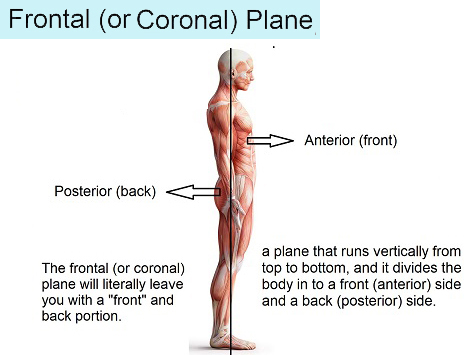

- Library


